The first representative of the DPRK artillery systems, light 107-mm MLRS Type-75
The first representative of the DPRK artillery systems, which are routinely designed and produced in the class of “improvised MLRS”, and are also routinely installed on various equipment, is the North Korean light 107-mm MLRS Type-75 (and its variants with a different number of guides).
It has already been mentioned previously (together with the basic performance characteristics), but in the DPRK it is a really massive weapon. They can normally be found not only in a towed version with 12 guides (among KPA artillerymen) or on vehicles (with 12-24 guides), but also as a standard weapon on armored personnel carriers and armored personnel carriers (18-24, respectively).
Those. a significant part of the commanders of lower units and crews of KPA combat vehicles have the standard ability to send the equivalent of a salvo of 12 to 24 105-mm howitzers towards the enemy in just a few seconds from just one vehicle. Even if it's an armored personnel carrier or armored personnel carrier! This adds significant firepower to KPA tactical formations, complementing the usual arsenal of support weapons.
At the same time, for the Type-75 there are high-explosive fragmentation ammunition, and with GGE and incendiary, and even cluster ammunition. The latter are approximately 1.5-2 times more effective against infantry and light vehicles in open areas.
The system itself is extremely simple and cheap (like most types of ammunition for it). And in the same DPRK, thousands of launchers themselves and millions (!) of missiles for them were produced (including the presence of now huge warehouse stocks).
The Type-75 is a combination of versatility, low cost, firepower and simplicity.
Type-75 (registered in Russia) could become a good standard “amplifier” for various equipment operating in the northwestern military zone. Fortunately, the country that produced the system has no problems with the availability of missiles for them.
Photos of a museum model of a launcher with a visual diagram of a cluster munition (taken in Pyongyang) were kindly provided by Vitaly Lebedev.
The first representative of the DPRK artillery systems, which are routinely designed and produced in the class of “improvised MLRS”, and are also routinely installed on various equipment, is the North Korean light 107-mm MLRS Type-75 (and its variants with a different number of guides).
It has already been mentioned previously (together with the basic performance characteristics), but in the DPRK it is a really massive weapon. They can normally be found not only in a towed version with 12 guides (among KPA artillerymen) or on vehicles (with 12-24 guides), but also as a standard weapon on armored personnel carriers and armored personnel carriers (18-24, respectively ).
Those. a significant part of the commanders of lower units and crews of KPA combat vehicles have the standard ability to send the equivalent of a salvo of 12 to 24 105-mm howitzers towards the enemy in just a few seconds from just one vehicle. Even if it's an armored personnel carrier or armored personnel carrier! This adds significant firepower to KPA tactical formations, complementing the usual arsenal of support weapons.
At the same time, for the Type-75 there are high-explosive fragmentation ammunition, and with GGE and incidentiary, and even cluster ammunition. The latter are approximately 1.5-2 times more effective against infantry and light vehicles in open areas.
The system itself is extremely simple and cheap (like most types of ammunition for it). And in the same DPRK, thousands of launchers themselves and millions (!) of missiles for them were produced (including the presence of now huge warehouse stocks).
The Type-75 is a combination of versatility, low cost, firepower and simplicity.
Type-75 (registered in Russia) could become a good standard “amplifier” for various equipment operating in the northwestern military zone. Fortunately, the country that produced the system has no problems with the availability of missiles for them.
Photos of a museum model of a launcher with a visual diagram of a cluster munition (taken in Pyongyang) were kindly provided by Vitaly Lebedev.
-
 14:56
14:56
Gunblastdotcom
2 months ago $2.28 earnedThe NEW 1911 Black Emissary 4.25-Inch 45 ACP Semi-Auto Pistol from Springfield Armory®
831 -
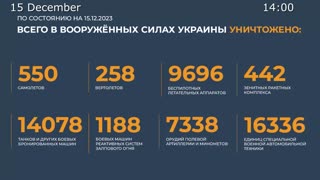 5:15
5:15
SupportRussia
5 months ago⚡️🇷🇺🇺🇦 Morning Briefing of The Ministry of Defense of Russia (December 9-15, 2023)
176 -
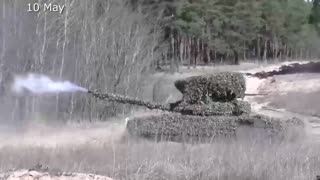 6:00
6:00
SupportRussia
30 days ago⚡️🇷🇺🇺🇦 Morning Briefing of The Ministry of Defense of Russia (May 5-10, 2024)
97 -
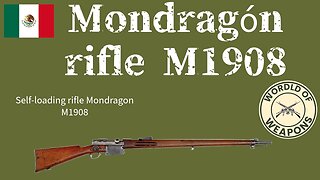 4:22
4:22
World Of Weapons
1 month agoMondragón rifle M1908 🇲🇽 The first automatic rifle ever created
38 -
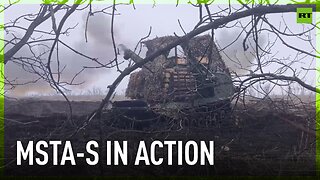 0:45
0:45
RT
29 days agoRussian ‘Msta-SM2’ strikes Ukrainian armored vehicles and US-made M777 field artillery gun
3.71K2 -
 3:17
3:17
SupportRussia
5 months ago❗️🇷🇺🇺🇦🎞 Rybar Daily Digest of the Special Military Operation: December 11-12, 2023
136 -
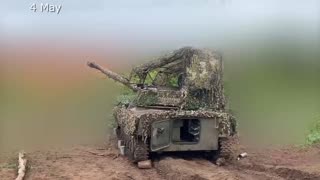 5:36
5:36
SupportRussia
1 month ago⚡️🇷🇺🇺🇦 Morning Briefing of The Ministry of Defense of Russia (April 28-May 4, 2024)
127 -
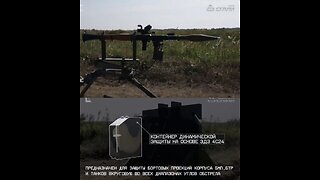 2:44
2:44
Military Technologies, Innovations & Future Weapons
1 month agoKalashnikov spotlights new reactive armour prototype - typed 4С24
521 -
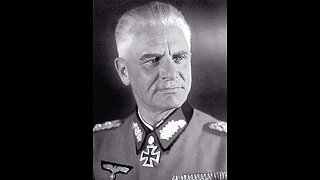 2:07
2:07
A Small Part of History
3 months agoUnveiling the Legacy of General Robert Martinek: A Mastermind of Artillery
91 -
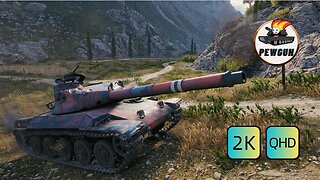 9:30
9:30
PewGun
3 months agoAMX 30 1ER PROTOTYPE 狡猾出奇,制敵必勝! | 9 kills 9k dmg | world of tanks | @pewgun77
4